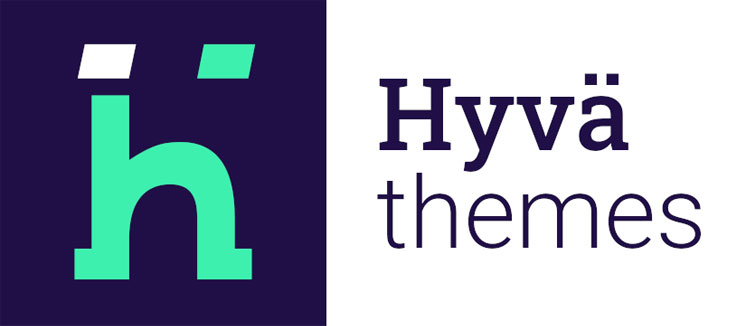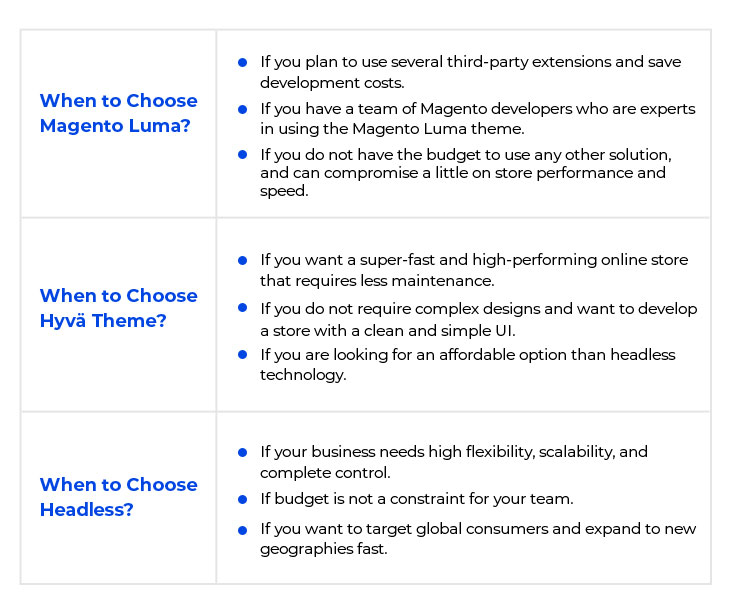The Best Ways to Design a Magento 2 Frontend in 2023 (Other than Magento Luma)
-
 Kamlesh
Kamlesh
- 3 years

The world of Magento frontend development is larger than you think. There are plenty of framework options to choose from, and they all have pros and cons. You can select the one depending on your business needs and preferences.
However, your ultimate goal should be setting up an exceptional customer experience that helps you generate conversions. Using the right frontend development framework can help you achieve this goal faster, so your decision should be well-researched and analyzed.
As a matter of fact, most eCommerce entrepreneurs do not know options other than Magento Luma to design their store frontend. Undoubtedly, it is one of the most popular options, but there are some equally great (or even better) options out there that you must check before settling on a decision.
In this blog, we will discuss all the other possible options you have other than Magento Luma, along with their pros and cons to help you make a well-informed decision. So, let’s get started.
1. Hyvä Theme

Created by Willem Wigman (a Dutch Magento developer), Hyvä is a theme for building a Magento frontend that removes all the complexities of the Magento Luma theme and makes it easy to create a web store. Its developer maintained all the positive aspects of Magento Luma while creating the Hyvä theme and removed all aspects that contributed to issues and inefficiencies.
The main objective of Hyvä theme is to tackle the performance issues that come with Luma and provide a positive experience to developers and end-users. Let’s discuss some of the pros and cons of the Hyvä theme.
Pros
- Reduced complexity: The Hyvä theme is developer-friendly. Due to its simple and smooth UI, it is easy to work using the Hyvä theme.
- Fewer dependencies: Hyvä theme has fewer dependencies, so you will not have to manage many libraries and functions unnecessarily.
- SEO-friendly: Websites developed using the Hyvä theme are search engine optimized and help you get more visibility and customers.
- Speed and Performance: Websites developed using the Hyvä theme are high-performing and robust. Also, it is regularly updated with new features.
Cons
- Cost: Hyvä is a great option, but it might be expensive for some small-scale businesses. You will have to pay 1,000 Euros per license to use it. Also, keep in mind the customization and installation fees you must pay.
- Compatibility Issues: Some popular third-party extensions are incompatible with Hyvä. Because of removed dependencies, incompatibility issues may arise.
- Design: Hyvä works great when it comes to clean and simple designs. However, it may not be the right choice if you require complex designs and animations.
- Doesn’t Support Adobe Commerce: At present, the Hyvä theme only supports Magento 2 open-source, and it isn’t compatible with Adobe Commerce.
2. Headless Technology
Another great way to develop a Magento store is by using headless technology. Using headless, the frontend and backend applications are decoupled and developed separately using different technologies.
For example, you can use Vue, React, or any other technology to create the store’s frontend, and it can then be connected to Magento using GraphQL. It provides eCommerce store owners with great flexibility and scalability as the entire system is decoupled, and it is easy to alter the customer experience whenever required. Let’s discuss some pros and cons of developing a Magento store the headless way.
Pros
- Great CX: You can deliver a personalized experience to consumers using headless. Because altering the CX takes less time, your team can customize the experience for different consumer segments.
- Better Omnichannel marketing: Headless commerce technology lets you share content across various platforms.
- Better flexibility: Using the headless technology, you can alter your front end whenever you want to provide a customized UX.
- Faster scaling: Scaling a business is easy with headless because the front end is separate from the back end.
Cons
- Expensive: Decoupled frontend and backend means different hosting and maintenance services, resulting in an additional cost to run the website. Also, you will have to train your team to maintain the system for security, updates, design templates, etc.
- Effort: You will need to spend a lot of effort developing and managing a headless website, and still, performance is not guaranteed.
Headless vs Hyva Theme: Which is Best?
No one size fits all in the eCommerce industry. Other than the ones mentioned above, there are many ways to develop an eCommerce front end. For example, you can create a PWA or use VueStorefront or GraphCommerce to fulfill your needs. But, what is best for you, depends on your business needs and goals.
Thus, you must define your business requirements first and then decide what option you require. Here is when Luma, Hyvä, and Headless technology is good for you:

Luma is a good option for merchants who need minimal customization before launching an eCommerce store. Also, if page speed-like metrics matters little to you and you want to save money using third-party extensions, go with it. On the other hand, Hyvä is an ideal option if you require a modern-looking web store with simple and clean designs. But, you will need developers who are proficient in using Hyvä to use it to the full of its capabilities.
Headless technology is best if you are a content-driven brand. If you want to provide a highly-personalized customer experience and integrate technologies like AI or AR, it is a perfect choice for you. Also, for brands desiring higher scalability, headless is an ideal choice.
All in all, which is the best option for you depends on your business needs and what you want to achieve. All three options mentioned above have their own pros and cons. If you still need help or consultation in choosing the perfect option, contact Envision eCommerce experts. We will analyze your business needs to help you make an informed decision.












